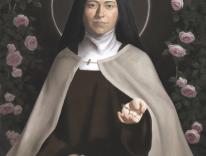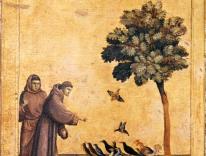On Sunday, February 25, 2007, Marzena Ladiejewska and her mother Urszula Winiarski went to their former home in Cheshire, Connecticut. The house was up for sale, and Marzena and Urszula arrived to prepare it for an open house later that day.
Urszula’s former husband, Tadeusz, had been living there, but the court barred him from the premises when his ex-wife was pres¬ent. Urszula divorced Tadeusz in July 2006, after enduring more than a decade of abuse at his hands. Selling the house was part of the divorce settlement. Proceeds from the sale would help support their two teenage sons who had been living with their mother. That Sunday, the boys also came along to help.
It’s not clear whether Tadeusz Winiarski was lying in wait at the house or whether he arrived after Marzena, Urszula, and the boys. He shot and killed Marzena first. He murdered Urszula next. According to newspaper reports, Tadeusz pointed his shotgun at one of his sons but finally turned it on himself and took his own life.
I knew Marzena when she was a religious-studies major at the College of the Holy Cross. I remember experiencing the in loco parentis feeling teachers sometimes get when I sat next to Marzena during her induction to Phi Beta Kappa (her mother and stepfather didn’t show up). Back in the spring of 2000 when she graduated, all of us in the Department of Religious Studies had parental feelings for Marzena-even though she did some parenting of her own as our student assistant. But what I remember most is Marzena’s assertiveness in class discussions, particularly her passionate defense of traditional Catholic devotions. I was initially perplexed that a student as active and bright as Marzena would embrace such “grandmotherly” forms of Catholicism. After all, as one of my spiritual mentors had once told me, pre-Vatican II piety wasn’t real spirituality. Marzena once told me how she prayed to Padre Pio and Sr. Maria Faustina Kowalska. Both were stigmatics: Pio was the public figure while Faustina was hidden, living in a convent, keeping her wounds private.
After Marzena graduated, I began noticing that more and more students were being drawn to solitary, suffering saints like Pio and Faustina. While body piercings and tattoos may be the dominant fashion, students now wear scapulars and miraculous medals-not in jest but in earnest. I once thought such religious sensibilities were basically an escape into an idealized Catholic past. But what Marzena understood, and I did not, was how these devotions celebrated the hidden life. Stigmatics bear the marks of their secret lives of rapture and union. Scapulars and miraculous medals give witness to hidden hopes, fears, and promises.
At the wake, mourners wore buttons bearing pictures of Marzena and Urszula-a devotion to victims that pointed to memories and feelings too powerful for words. Regrettably, violence often reveals the hidden lives of people like Marzena, Urszula, and the Winiarski boys. But while such lives become known for a moment, victims are quickly forgotten-Marzena and Urszula made the papers for a few days, only to vanish from print before they were even buried.
Contemplating violent death can also lead us to a hidden place. When I was told of Marzena’s murder, I felt it in my gut. The sensation was neither a dull ache nor a sharp pain. It was hunger, emptiness. The emptiness wasn’t filled by my anger toward Tadeusz, or by my sadness over the murders. The emptiness remained even after I considered tighter gun laws and greater protections for abused women. As far as I know, none of that could have stopped Tadeusz. Simone Weil once wrote that we finite human beings cannot fully experience the perfect presence of the divine. But we can fully experience perfect absence-an absence that reveals our often hidden longing for God. The hunger and emptiness I felt came from a sense of absence-absence of meaning and of God. Sometimes we try to hide such feelings, but inevitably we find ourselves at the foot of the Cross, gazing at that ultimate symbol of violence and absence. Many of us then go to the tomb to wait.
Please email comments to [email protected] and join the conversation on our Facebook page.
Share
Previous Story
Populist & Cosmopolitan
Next Story
Ready, aim...

